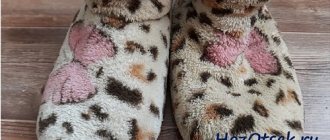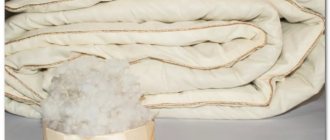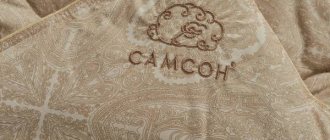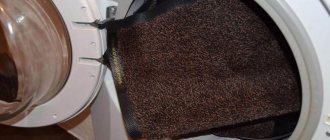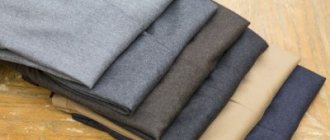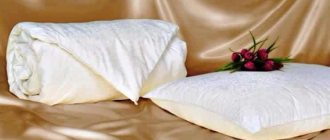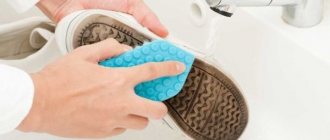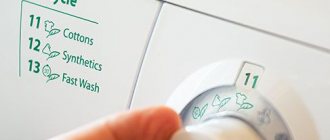What's the best way to keep you warm on a winter night? Of course, a warm, soft, fluffy blanket. How nice it is, after a long day of work, to wrap yourself in it and immerse yourself in the long-awaited comfort of home. But, like all things in the house, blankets get dirty. The ubiquitous dust, pets, and small children will inexorably help bring the day of cleaning closer.
Peculiarities
Keeping blankets clean is difficult, but necessary. They are large in size and have different types of fillers. The choice of washing method depends on the outer covering fabric, structure, thickness, and fibers for padding. Covers for bedding are made from calico, silk, satin, satin, teak. The following are used as fillers:
- feather;
- wool;
- cotton wool;
- bamboo;
- synthetics.
Each combination of fabric and padding has its own requirements for water, temperature, detergent, and washing method (dry, hand, machine).
Preparing for washing
It is recommended to prepare before washing. First, the blanket is freed from the duvet cover. Inspect for defects. If the seams have come apart or there are holes, everything needs to be sewn up.
Whether you can wash a blanket at home depends on its filling. Some items can only be cleaned dry.
First remove dust from the blanket. Just shake it well a few times. If old stains are present, they can be removed using laundry soap. It needs to be foamed and applied to problem areas. Only after the described steps can you start washing.
If there are particularly dirty areas, clean them first with a brush and soapy water. Usually the area near the edges gets more dirty.
What kind of wool is used
Blankets and rugs made of pure wool give a feeling of warmth, comfort, and have healing properties. Therefore, products made from this material do not go out of fashion. They are produced in 2 types: lightweight models for the off-season and a winter version.
camel
Products made from camel wool are antistatic and do not collect dust. They are light, compact, and retain heat well. They produce 2 versions of blankets:
- resembling a blanket (made of fluff);
- with fabric covering, filled with wool (quilted, karo-steppe, cassette).
With proper care, the products last for 20-30 years, after washing they retain their original shape, and rarely cause allergies.
Sheep
The most blankets are made from sheep's wool. They have pros and cons that are evaluated when choosing.
| pros | Minuses |
| Provides optimal temperature for sleep | Ticks are starting to appear |
| Does not accumulate static electricity | May cause allergies |
| Hygroscopic, this is convenient for those who suffer from excessive sweating | Caking |
| Breathable | Heavy |
Sheep wool blankets last 10-15 years. They cannot be machine washed. This makes care more difficult.
Merino and alpaca
Merino is a breed of sheep. They have long, very fine wool with special characteristics:
- light;
- does not absorb moisture;
- soft;
- conducts air well;
- has bactericidal properties.
Alpacas are animals from the Camelidae family. Their habitat is the highlands of South America. The fur of these animals is delicate, long, thin, and hollow inside. Blankets are woven from it. They are much warmer than products made from merino wool. Indicated for people with joint diseases, osteochondrosis, and circulatory pathologies. The blankets are hypoallergenic and get dirty a little. The only downside is the high price.
What do the icons on the tag mean?
Each product comes with a label with basic washing instructions. It shows international symbols for washing, ironing and drying conditions. Usually there are 5 or 6 of them:
- what type of washing is allowed (prohibited), recommended water temperature;
- Is it possible to use detergents containing bleach?
- dry cleaning is allowed (with a solvent other than trichlorethylene, gentle, with mild solvents), prohibited;
- Spin is allowed (prohibited);
- type of drying (unfolded, dry vertically, stretched);
- allowed (prohibited) to iron, recommended temperature.
See also
Reasons and what to do if laundry smells musty after washing
Rules of care
Wool products require gentle care. Once a year, the item should be dry cleaned to prevent mites from infesting it. If the service is not available, then wash by hand or machine.
To make the blanket less dirty, use bed linen. Change the duvet cover weekly.
Dry naturally on the loggia or street once every 2-3 months. Ventilate and shake every week. Remove stains that appear using special means, using a sponge to apply foam to the area of contamination, removing it with a dry cloth. If the bedding is temporarily not needed, it is stored in the closet, packed in an unsealed bag, with a moth repellent in it.
When the blanket needs cleaning
Washing a blanket can be planned or unplanned. In the first case, periodic cleaning of the product is carried out. It is enough to wash it once a year. But it is recommended to take into account the level of air humidity, room temperature, the presence of pets, the possibility of allergies, etc. All of the above criteria increase the frequency of scheduled washing to several times a year. Extraordinary cleaning is required when stains from dirt, spilled tea, etc. appear on the product.
Home textiles need timely cleaning and washing.
Note! Blankets for allergy sufferers should be washed at a minimum temperature of 60 degrees. Therefore, it is better to refuse padding polyester and natural wool. These materials are treated with water at a temperature of 30 degrees.
It is worth noting that timely and proper care of bedding can increase their service life by up to 10 years.
Instructions on how to wash a blanket can be found on the label sewn to the product or on the insert in the package.
What types can be washed
Most often, items filled with cotton wool require washing. It gets dirty quickly and absorbs foreign odors. Wool requires delicate handling. Bedding made from it loses its shape when used:
- hot water;
- twisting;
- strong friction.
They are washed with special liquid products. Choose gentle programs:
- Handwash.
- Wool.
- Gentle washing of delicate fabrics.
The easiest way to keep bedding clean is with synthetic fillers (holofiber, padding polyester). They are wear-resistant and do not suffer from high temperatures (50-60 °C). Down and bamboo blankets are washed according to certain rules. They are described below.
Drying tips
It is recommended to dry all types of blankets horizontally. This will prevent heavy fabrics from stretching when exposed to moisture. Blankets with filling will not bend or crumple where the clothesline passes. You can ensure such drying by laying out the washed item on a large sheet of polyethylene on the ground, as in the quilted example. Be sure to place a long stick in the middle of the blanket to lift the fabric.
If it is not possible to dry the blanket this way, then you can do it in the bathroom. Then you need to hang it on 2 clotheslines located at a distance. This way the load will be distributed evenly and the fibers will not stretch.
If you hang the product outdoors, do not place it in direct sunlight. Hot temperatures may cause the filler to become harder, and there is also a possibility of the cover fabric fading.
How to wash
Using a duvet cover does not provide 100% protection from sweat, dust, and other contaminants. Children's bedding gets dirty the most. Depending on the type of product and the recommendations indicated on the label, choose manual or machine washing.
Preparation
Before starting the procedure, the blanket is removed from the duvet cover. For closed models, you need to pay attention to the integrity of the cover. The holes need to be mended and patches applied to large ones. When washing, the fabric may tear even more. The filler will fall out of the hole.
For quilted products, all seams must be inspected. They have a functional meaning - they fix the packing. The broken stitch needs to be repaired. Quilt by hand or on a sewing machine. If this is not done, the filler will form a lump during washing.
The item is knocked out, shaken out of dust outside or cleaned with a vacuum cleaner. Inspect for stains. If there is local contamination, wash it. Use approved types of stain removers. Read the instructions before use.
Handwash
This type of washing is labor-intensive, but gentle. There is no need to worry about the appearance of the product. First, the surface is inspected for stains and heavy contamination. They are treated with special products (stain remover, dishwashing gel, 72% laundry soap).
Fill the bathtub with warm water. Control the temperature. It should not exceed that indicated by the manufacturer on the label. The optimal water temperature for all types of fillers is 30 °C. Add a mild, liquid detergent.
The product is completely immersed in water. Leave for 1-2 hours. Without removing the blanket from the bathroom, pull out the plug and completely drain the dirty liquid. To rinse, draw clean water 2-3 times. Finish when it becomes transparent. The thing is not twisted. Allow the liquid to drain and squeeze out gently.
Automatic in the washing machine
Machine washable if the weight of the product does not exceed the maximum permitted volume of the drum. It is indicated in the instructions for the device. To ensure that the load is distributed evenly, the blanket is rolled into a loose roll.
Be sure to put balls (washing balls, tennis balls). They prevent the formation of lumps. Gels are used for products made from all types of wool:
- Spiro;
- "Villus";
- "Cashmere Stork";
- Help.
Machine or hand wash?
Large and bulky items can be washed in machines with a large load weight and having special programs for special washing
The answer to this question depends on two factors: the material of the product and your washing machine. We'll talk about materials a little later, but now we'll focus on your washing machine. It would seem that the blanket is light, washing it will not be a problem. However, when wet, it can increase its weight. How much depends on the material. Sometimes this figure reaches ten times. Not every machine can handle this weight. So before washing, find the instructions for your washing machine model. Check if you can wash bulky items in it.
Recommended washing modes depending on the type of fabric for a specific washing machine
How to clean without washing at home
Dry cleaning is resorted to if there is no icon on the label allowing washing (hand, machine). A piece of cellophane is spread on the floor. Lay a blanket on it. In a small bowl, dilute a detergent containing lanolin and beat it.
See also
25 best methods for removing mold from clothes at home
Sequence of actions for dry washing:
- The resulting foam is applied to one side.
- Do not rub too hard with a soft washcloth.
- Remove any remaining detergent with a damp sponge.
- The product is turned over and operations 1-3 are repeated.
- Dry flat, in a room with an open window.
We move the blanket to a place where it will dry.
Remember that the blanket is very heavy and wet, so carrying it from place to place with your hands is quite difficult. To save yourself the discomfort, take a large garbage bag or bucket. They must be clean and dry. Carefully move the blanket into it. By this time it should already lighten and become lighter, since all the excess moisture has been removed from it.
Using a bag or bucket will make it easier for you to transport the blanket to the place where you will dry it.
Features of washing padding polyester and holofiber
Sintepon is a white non-woven material consisting of synthetic fibers bonded into a fabric by heat treatment (euro-sintepon) or using needles (needle-punched). The material is inexpensive, light, elastic, and retains heat well. To produce blankets, fiber with a density of 100 g/m² is used.
Holofiber has a uniform porous structure. This is a synthetic material that is resistant to compression and quickly restores its structure. It is lightweight and retains heat well, which is why it is used as a filling for blankets.
Caring for blankets made of padding polyester and holofiber is easy.
Water temperature
Products filled with padding polyester are washed at 40 °C. The optimal temperature for holofiber is 60 °C.
Mode
Large items can be washed on machines with a capacity of 6 kg or more. Set mode:
- manual;
- delicate;
- bulky things;
- duvet blanked.
The choice depends on the model of the household device. For spinning, set 300-500 revolutions, turn off drying.
Choice of product
Use only liquid detergents or capsules. They leave no streaks or white spots behind. The detergent should not contain bleach. Even children's hypoallergenic washing powders are suitable for synthetics:
- "I was born";
- "Eared Nanny";
- "Spring tenderness."
Using tennis balls
The balls are placed in the drum in order to increase the washing efficiency. They break up synthetic fibers and prevent them from matting. Use tennis ones (5-6 pieces) or special ones with spikes made of colored PVC.
How to wash
Bedding filled with holofiber and padding polyester is washed once every 3 months. The blanket is removed from the duvet cover, placed loosely in the drum, without compaction. Pour liquid detergent into the compartment. Set the desired mode. After washing, the blanket is dried flat (horizontally). Turn over periodically.
General approaches
Today on the bedding market you can find many blankets with a wide variety of fillings - wool, padding polyester, holofiber, down, cotton wool. They all have different properties and belong to different price categories. The buyer chooses what he needs according to the season, thickness, and other individual requirements that correspond to his budget and health status (presence of allergies). Before you start washing, you need to know the composition of the filler, which is usually indicated on the label.
Read about: how to wash tulle so that it is white.
There, the manufacturer must also indicate recommendations for care - washability, temperature conditions and other features. If dry cleaning is indicated as the only possible method of cleaning, you cannot wash it yourself, but must take it to a specialized institution.
On a note
If the blanket is not very dirty, but there are some stains on it, they can be washed. To do this, dilute a liquid detergent for washing woolen fabrics in warm water and whip up a rich foam. Apply it to the stains and leave for ten minutes, then wipe with a damp cloth.
Heavier stains can only be removed by washing.
Washing a bamboo blanket
Bamboo bedding is very popular. The fiber is natural. It is environmentally friendly. With proper care, it holds its shape for a long time and does not wrinkle. They are washed by hand and in a washing machine.
How to choose a product
Bamboo filling can be washed with liquid detergents.
How often should you wash?
The minimum number of washes per year is 2, the recommended number is 4. Bamboo bedding will be 100% clean if it is washed every quarter.
Which mode and temperature to choose
The label indicates the permissible washing temperature. It should not exceed 40 °C. It is important to choose the right program. It should not last more than 60 minutes. The fiber does not tolerate prolonged contact with water. The rinse mode is started twice. Spin at 800 rpm.
Washing rules
The item should occupy no more than ⅔ of the drum volume. Before storing, you need to check the cover for damage and integrity of the stitching. If present, remove them. Do not stuff the blanket into the drum haphazardly. Roll into a loose roll.
At the end of the program, immediately take it out. Dry flat on a horizontal surface in a well-ventilated area.
Recommendations
Bedding lasts longer, maintaining its functional properties and aesthetic appearance, if its care is properly organized:
- After sleep, the bed is ventilated for 20-30 minutes, then made;
- beat 2-3 times a week;
- Ventilate on the loggia (balcony) 1-2 times a quarter, take it outside once a year in cold weather, and once in hot weather.
Prevention
The choice of how to restore cleanliness and freshness to a blanket depends on the material from which it is made and the degree of its contamination. To keep it always clean without dust accumulations quite regularly:
- Carry out dry cleaning 1-2 times a year and thoroughly ventilate it in the fresh air;
- you can periodically treat the blanket with hot steam (if the temperature indicated on the label allows it) using a household steam generator;
- It is very useful to take the blanket out into the cold in winter for several hours.
If you follow these simple rules, you won’t often have to resort to more radical washing methods. These procedures will help keep the blanket clean and reduce the risk of allergic diseases.
If the blanket is too large or has a high degree of soiling that cannot be removed at home, the wisest thing to do is to have the blanket dry cleaned.
To increase its service life, you need to select a blanket that is ideal for each season and room temperature. The material from which the blanket is made should be selected taking into account the individual characteristics of its potential owner.
How to wash a duvet
It is recommended to wash bedding filled with down at least once a year. These products absorb sweat and moisture from the air. They harbor dust mites. Fungi - in the absence of proper care.
See also
Is it possible and how to properly wash sheepskin at home?
Preparatory activities
Check the integrity of the cover and stitches. The holes are sewn up, the unraveled lines are sewn again. If heavily soiled, soak for 15-20 minutes. Add 2-3 teaspoons of table vinegar to the water.
Choosing the right mode
If there is an icon with a hand in water on the label, then the duvet is washed by hand. If there are icons that allow machine washing, the product is sent to the drum of the machine. Provided that its volume is sufficient for washing.
How does the washing process work?
If you follow the washing rules, a product filled with down does not lose its attractiveness and retains its functionality.
Automated
Select the “Hand Wash” program and set the temperature to 30-40 °C. 3-4 tennis balls are placed in the drum. Pour in liquid detergent. The blanket is evenly distributed over the drum. The Rinse program is started twice. Spinning is carried out at low speed.
Manual
It's easier to do laundry with two people. Wet fluff is very heavy. The bath is filled with warm water. Pour in liquid detergent. Beat the foam with your hands. Place bedding in the container. Leave it in soapy water for 60 minutes. Rub the surface with massaging movements. To remove detergent, the water is changed several times. Squeeze out and dry flat.
Removing stains
Easily remove fresh stains from the cover. You need to add ½ liter of white wine vinegar to a bathtub filled with water and pour in a little liquid detergent. Soak the blanket for 10 minutes, then rinse, replacing the water.
Use other stain removers:
- Treat with stain remover. To do this, the fluff is moved away from the area of contamination and the product is applied. After 15 minutes, remove it with a damp cloth.
- Traces and smell of urine are removed with a solution of soda and vinegar. The cover is ripped open and the dirty filling is taken out. It is washed in soapy water. The fabric is moistened with a solution of soda and vinegar. After drying, the fluff is placed inside and the product is sewn up.
- Apply detergent to the stain and treat with a steam generator.
